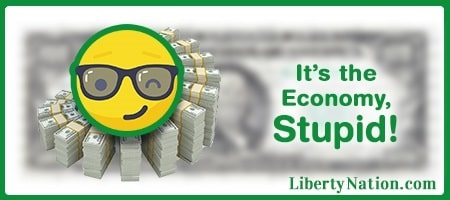The US economy has officially recovered all the jobs lost during the coronavirus pandemic. The July jobs report was shocking, surprising, and sizzling, defying all the economists’ expectations. Undoubtedly, the administration will take a victory lap and all the credit for the employment boom. Are congratulations in order? Most certainly. But while the numbers were smoking, there are still plenty of gaping holes in the US labor market that should give some pause before whipping out the champagne.
July Jobs Report Heats Up
the US economy added 528,000 jobs in July, more than double the estimate of 250,000, according to the Bureau of Labor Statistics (BLS). This is up from the upwardly revised 398,000 positions that were returned to the marketplace in June. The unemployment rate ticked lower to 3.5%, better than the consensus of 3.6%.
Last month, average hourly earnings rose 0.5% month-over-month to $32.27. Average hourly earnings advanced at an annualized pace of 5.2% in July. Average weekly hours edged up to 34.6, while the labor force participation rate dipped to 62.1%.
Nearly every sector of the economy witnessed exceptional job growth, including leisure and hospitality (+96,000), professional and business services (+89,000), health care (+70,000), government (+57,000), and construction (+32,000). The only industry not to record a gain was wholesale trade.
This was the good news. But what was the bad news? First, the number of people who are holding two jobs topped 7.5 million, up from around seven million at the same time a year ago. The second was that the number of individuals employed part-time for economic reasons swelled by 303,000 to 3.9 million. Plus, the number of people not in the labor force but wanting a job increased to 5.9 million. But, finally, all jobs lost due to the coronavirus pandemic have been returned to the economy.
Of course, the other elephant in the room is the negative wage growth. Despite the impressive 5.2% year-over-year earnings gain, the real wage rate (inflation-adjusted) is –4.4%.
Meanwhile, the financial markets were not too thrilled about the labor data. Soon after the numbers were released, the Dow Jones Industrial Average shed more than 200 points, the Nasdaq Composite Index lost 200 points, and the S&P 500 tumbled 1%. The US Dollar Index (DXY), a measurement of the greenback against a basket of currencies, advanced 0.1% on monetary policy tightening. The Treasury market also popped, with the benchmark ten-year yield up 13.4 basis points to 2.81%. And, yes, the spread between the two- and ten-year yields widened to -44 basis points.
How Did This Happen?
All the metrics point to a slowing labor market. The number of Americans filing for jobless benefits keeps rising. Layoffs – small businesses and large corporations – continue increasing. Business sentiment among smaller firms and CEOs is waning. So, what is going on exactly? Well, this is what happens when the Federal Reserve and the federal government distort the US economy by injecting it with trillions of dollars in freshly created and deficit-financed money.
 Investors are now concerned that the Eccles Building will pull the trigger on a 100-basis-point rate hike at next month’s Federal Open Market Committee (FOMC). Since inflation remains too high, and the job market can ostensibly withstand the hikes to the benchmark fed funds rate (which is still negative!), perhaps Fed Chair Jerome Powell and his colleagues will press their luck with more hawkish behavior.
Investors are now concerned that the Eccles Building will pull the trigger on a 100-basis-point rate hike at next month’s Federal Open Market Committee (FOMC). Since inflation remains too high, and the job market can ostensibly withstand the hikes to the benchmark fed funds rate (which is still negative!), perhaps Fed Chair Jerome Powell and his colleagues will press their luck with more hawkish behavior.
The post-pandemic economy will certainly be studied in economics textbooks for generations to come. Nothing makes sense in this chaotic environment. It is abnormal – a Frankenstein’s monster, if you will. Whatever the case, at least the federal government will keep adding fuel to the fire of uncertainty.



